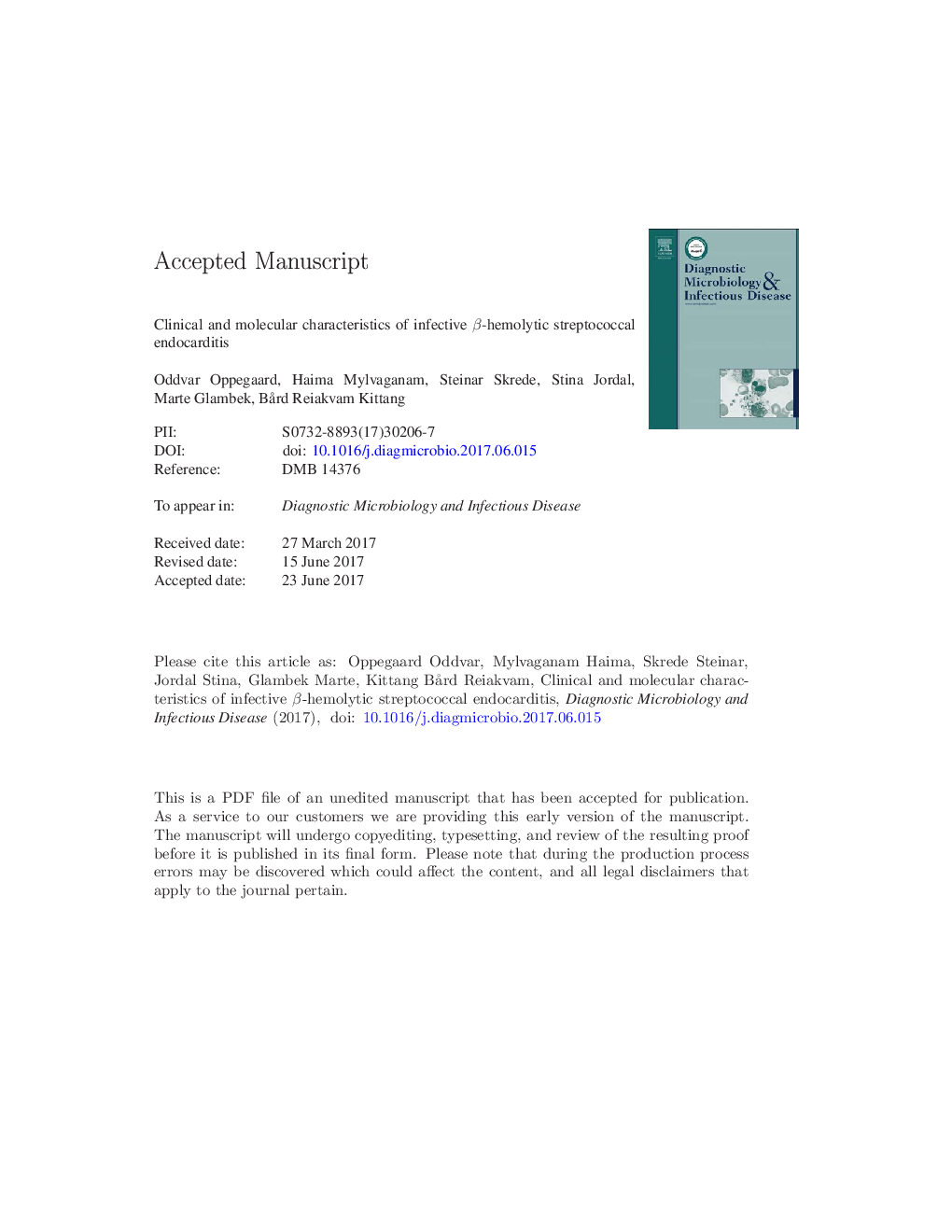| Article ID | Journal | Published Year | Pages | File Type |
|---|---|---|---|---|
| 8737412 | Diagnostic Microbiology and Infectious Disease | 2017 | 34 Pages |
Abstract
Streptococcus pyogenes (S. pyogenes) and Streptococcus dysgalactiae subspecies equisimilis (SDSE) cause considerable morbidity and mortality, and show similarities in disease manifestations and pathogenic mechanisms. Their involvement in infective endocarditis, however, has not been well described. Invasive S. pyogenes and SDSE infections in Health Region Bergen, Norway, in the period 1999-2013 were reviewed, and sixteen cases of endocarditis were identified. The median duration of symptoms was 2.5Â days, the frequency of embolic events 50%, 38% received valve replacement and the 30-day mortality was 25%. In S. pyogenes, a significant correlation was observed between the repertoire of fibronectin-binding genes, phenotypic binding ability to fibronectin and disease manifestations. Conversely, no associations between phenotypic and genotypic characteristics were detected in SDSE. S. pyogenes and SDSE endocarditis is characterized by rapid and severe clinical manifestations. The pathogenesis is multifactorial, but our results infer a potential role of fibronectin binding in the development of S. pyogenes endocarditis.
Keywords
RTIStreptococcus dysgalactiae subspecies equisimilisS. pyogenesSSTIAdhesinD-PBSIQRCFUBSAbovine serum albuminStreptococcus dysgalactiaeStreptococcus pyogenesEndocarditisEpidemiologySkin and soft tissue infectionRespiratory tract infectionDulbecco's phosphate buffered salinecolony forming unitspolymerase chain reactionPCRPathogenesis
Related Topics
Life Sciences
Immunology and Microbiology
Applied Microbiology and Biotechnology
Authors
Oddvar Oppegaard, Haima Mylvaganam, Steinar Skrede, Stina Jordal, Marte Glambek, BÃ¥rd Reiakvam Kittang,
